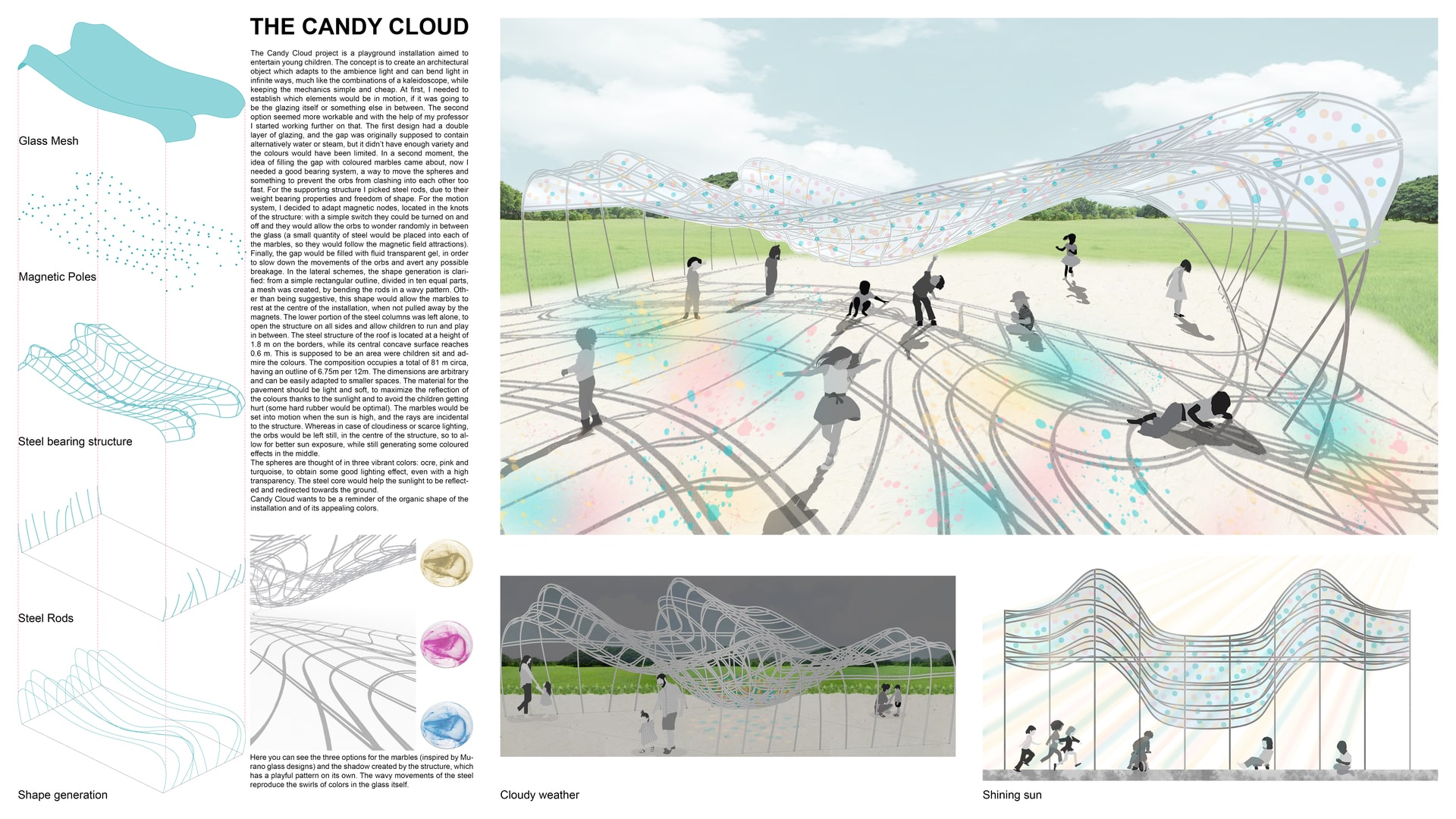Project Description
The Candy Cloud project is a playground installation aimed to entertain young children. The concept is to create an architectural object which adapts to the ambience light and can bend light in infinite ways, much like the combinations of a kaleidoscope, while keeping the mechanics simple and cheap. At first, I needed to establish which elements would be in motion, if it was going to be the glazing itself or something else in between. The second option seemed more workable and with the help of my professor I started working further on that. The first design had a double layer of glazing, and the gap was originally supposed to contain alternatively water or steam, but it didn’t have enough variety and the colours would have been limited. In a second moment, the idea of filling the gap with coloured marbles came about, now I needed a good bearing system, a way to move the spheres and something to prevent the orbs from clashing into each other too fast. For the supporting structure I picked steel rods, due to their weight bearing properties and freedom of shape. For the motion system, I decided to adapt magnetic nodes, located in the knots of the structure: with a simple switch they could be turned on and off and they would allow the orbs to wonder randomly in between the glass (a small quantity of steel would be placed into each of the marbles, so they would follow the magnetic field attractions). Finally, the gap would be filled with fluid transparent gel, in order to slow down the movements of the orbs and avert any possible breakage. In the lateral schemes, the shape generation is clarified: from a simple rectangular outline, divided in ten equal parts, a mesh was created, by bending the rods in a wavy pattern. Other than being suggestive, this shape would allow the marbles to rest at the centre of the installation, when not pulled away by the magnets. The lower portion of the steel columns was left alone, to open the structure on all sides and allow children to run and play in between. The steel structure of the roof is located at a height of 1.8 m on the borders, while its central concave surface reaches 0.6 m. This is supposed to be an area were children sit and admire the colours. The composition occupies a total of 81 m circa, having an outline of 6.75m per 12m. The dimensions are arbitrary and can be easily adapted to smaller spaces. The material for the pavement should be light and soft, to maximize the reflection of the colours thanks to the sunlight and to avoid the children getting hurt (some hard rubber would be optimal). The marbles would be set into motion when the sun is high, and the rays are incidental to the structure. Whereas in case of cloudiness or scarce lighting, the orbs would be left still, in the centre of the structure, so to allow for better sun exposure, while still generating some coloured effects in the middle.
